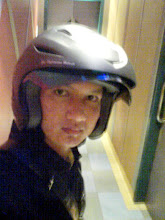
What is Gamelan?
A 'gamelan' is a kind of music ensemble of Indonesian origin typically featuring a variety of instruments such as metallop hones, xylopones, drums, and gongs. bamboo flutes, bowed and plucked strings, and vocalists may also be included. The term refers more to the set of instruments than the players of those instruments. A gamelan as a set of instruments is a distinct entity, built and tuned to stay together — instruments from different gamelan are not interchangeable.
The word "gamelan" comes from the Javanese word "gamel", meaning to strike or hammer, and the suffix "an", which makes the root a collective noun.
History of Gamelan
The gamelan has an old and mysterious origin. Apparently it predates the Hindu-Buddhist culture that dominated
TUNING
The tuning and construction of a gamelan orchestra is a complex process. Javanese gamelans use two tuning system, there are slendro and pelog. In central Javanese gamelan, ''sléndro'' is a system with five notes to the diaposan (octave) fairly evenly spaced, while ''pélog'' has seven notes to the octave, with uneven intervals, usually played in five note subsets of the seven-tone collection. This results in sound quite different from music played in a western tuning system. Many gamelan orchestras will include instruments in each tuning, but each individual instrument will only be able to play notes in one. The precise tuning used differs from ensemble to ensemble, and give each ensemble its own particular flavour. The intervals between notes in a scale are very close to identical for different instruments ''within'' each gamelan, but the intervals vary from one gamelan to the next.
INFLUENCE WESTERN MUSIC
The gamelan has been appreciated by several western composers of classical music, most famously claude debussy who heard a Javanese gamelan play at the Paris Exposition of 1989 (The gamelan Debussy heard was in the ''slendro'' scale and was played by Central Javanese musicians.) Despite his enthusiasm, direct citations of gamelan scales, melodies, rhythms, or ensemble textures have not been located in any of Debussy's own compositions. However, the equal-tempered whole tone. scale appears in his music of this time and afterward, and a Javanese gamelan-like heterophonic texture is emulated on occasion, particularly in "Pagodes," from ''Estampes'' (solo piano, 1903), in which the great gong`s cyclic punctuation is symbolized by a prominent perfect fifth.
Direct homages to gamelan music are to be found in works for western instruments by Bela Bartok, Francis Poulenc, Olivier Messiaen, and Steve Reich. In more recent times, American composers such as Barbara Benary, and Philip Glass as well as Australian composers such as Andrew Schultz and Rosse Edwards have written several works with parts for gamelan instruments or full gamelan ensembles. I Nyoman Windha is among contemporary Indonesian composers that have written compositions using western instruments along with Gamelan. American folk guitarist John Fahey is among contemporary Indonesian composers that have written compositions using western instruments along with Gamelan. American folk guitarist King Crimson while not using gamelan instruments, used interlocking rhythmic paired guitars that were influenced by gamelan
Recently, many Americans were first introduced to the sounds of gamelan by the popular anime film Akira. Gamelan elements are used in this film to punctuate several exciting fight scenes, as well as to symbolize the emerging psychic powers of the tragic hero, Tetsuo. The gamelan in the film's score was performed by the members of the Japanese musical collective Geinoh Yamashirogumi. Gamelan and kecak are also used in the soundtrack to the video game Secret of Mana Gamelan and kecak are also used in the soundtrack to the video game Battlestar Galactica features extensive use of the gamelan, particularly in the 3rd season.
